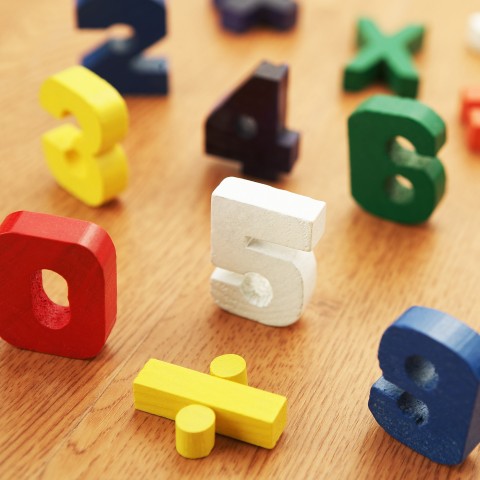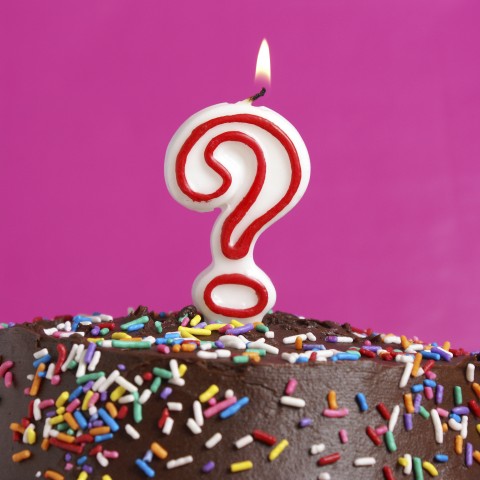
Have you ever found yourself shopping in the Netherlands, only to become confused when the cashier tells you the price? Or maybe you were having a smooth conversation with a native Dutch speaker, only to freeze up when trying to give your age.
If you plan on working or studying in the Netherlands for any length of time, you’ve got to learn some Dutch numbers.
Numbers are everywhere, in countless aspects of our daily lives: from giving our age to counting money, people, or things. Therefore, learning how to identify and use numbers is a vital skill for effective communication.
When you first begin studying Dutch numbers, it may be challenging—but if you stick to it, you’ll get the hang of it in no time. In this useful guide from DutchPod101, we’ll introduce you to the Dutch numbers from 1 to 1000 (and beyond!). In addition, we’ll teach you how to use them in different contexts.

Let’s learn those Dutch numbers!
 Table of Contents
Table of Contents
- The Dutch Numbers from 1 to 10
- Counting from 11 to 20
- Counting up to 100
- Counting to 1000 and Beyond
- Using Dutch Numbers
- How DutchPod101 Can Help You Learn Even More Dutch
1. The Dutch Numbers from 1 to 10
The first ten numbers (plus zero) are undoubtedly the most important, as they are the foundation of everything we’ll cover today. Here is a list of each numeral as well as the cardinal and ordinal versions, respectively.
| 0 | Nul | – |
| 1 | Eén | Eerste |
| 2 | Twee | Tweede |
| 3 | Drie | Derde |
| 4 | Vier | Vierde |
| 5 | Vijf | Vijfde |
| 6 | Zes | Zesde |
| 7 | Zeven | Zevende |
| 8 | Acht | Achtste |
| 9 | Negen | Negende |
| 10 | Tien | Tiende |
- ➜ In Dutch, there are two accents placed on the number “one” (één) to differentiate it from the article een (“a” / “an”), unless it’s clear from the context that the meaning is “one” instead of “a” or “an.”
- ➜ Learn how to pronounce numbers in Dutch using this vocabulary list on DutchPod101.com. Make sure to practice along with the audio recordings!
2. Counting from 11 to 20
Now that you’ve learned the Dutch numbers 1-10, it’s time to continue up to 20.
These numbers may seem harder to remember, but a lot of them are just the Dutch numbers from the previous section with tien added to the end. The rest are irregular, though, and you’ll just have to memorize them. Again, we’ll provide the numeral followed by the cardinal and ordinal versions.
| 11 | Elf | Elfde |
| 12 | Twaalf | Twaalfde |
| 13 | Dertien | Dertiende |
| 14 | Veertien | Veertiende |
| 15 | Vijftien | Vijftiende |
| 16 | Zestien | Zestiende |
| 17 | Zeventien | Zeventiende |
| 18 | Achttien | Achttiende |
| 19 | Negentien | Negentiende |
| 20 | Twintig | Twingste |

Yes! You now know how to count in Dutch from 1 to 20.
3. Counting up to 100
While you will have to memorize a few of these numbers, there are a couple of tricks that will make them easier to remember.
You’ll notice that all of the numbers, except honderd (“hundred”), consist of a number from 3 to 9 (or a variation of it) followed by -tig. For example, vijftig (“fifty”) is composed of vijf (“five”) and -tig. Here’s another example: Veertig (“forty”) is composed of veer, which is a variation of vier (“four”), and -tig.
As for honderd, it sounds a lot like the English “hundred.” This will hopefully make it simple to remember!
Let’s have a look:
| 30 | Dertig |
| 40 | Veertig |
| 50 | Vijftig |
| 60 | Zestig |
| 70 | Zeventig |
| 80 | Tachtig |
| 90 | Negentig |
| 100 | Honderd |
How do you form compound numbers above twenty in Dutch? This is easy! You just need the correct “tens” number, the number you want to add, and the Dutch word en (“and”).
Let’s try it out.
Let’s say the word for “fifty-six” step-by-step. “Fifty” is vijftig, “six” is zes, and now you need en (“and”) to combine them: zesenvijftig. But be careful! As you can see, instead of placing the number behind the tens as in English, you place the number in front. So zesenvijftig can be literally translated as “six and fifty.”
| 21 | Eénentwintig |
| 22 | Tweeëntwintig |
| 23 | Drieëntwintig |
| 24 | Vierentwintig |
| 25 | Vijfentwintig |
| 26 | Zesentwintig |
| 27 | Zevenentwintig |
| 28 | Achtentwintig |
| 29 | Negenentwintig |
All numbers up to 100 follow the same rule. For example:
| 31 | Eénendertig |
| 54 | Vierenvijftig |
| 67 | Zesenzeventig |
Wondering how to form Dutch ordinal numbers after twintig? Just add -ste after the number and you’ll be fine. For example:
| 31 | Eénendertigste |
| 54 | Vierenvijftigste |
| 67 | Zesenzeventigste |
4. Counting to 1000 and Beyond

Are you already getting confused by all these Dutch numbers?
So now we’ve come to the big Dutch numbers. You’ll have a much easier time learning these once you understand their structure, starting with the hundreds.
“One hundred” in Dutch is honderd, without the “one” in front of it. When counting the rest of the hundreds, we just put the appropriate numbers in front of the word honderd. However, unlike in English, there is no space in between the numbers. For example, “two hundred” is tweehonderd and “three hundred” is driehonderd.
| 200 | Tweehonderd |
| 300 | Driehonderd |
| (…) | |
| 900 | Negenhonderd |
Then, you can easily assemble large numbers by applying what you already know:
| 207 | Tweehonderdzeven |
| 556 | Vijfhonderdzesenvijftig |
| 983 | Negenhonderddrieëntachtig |
If you can count your hundreds, you can count your thousands too. It works exactly the same way. For “one thousand,” we leave the one out again and say duizend. For the rest, we combine duizend with the appropriate number.
| 1.000 | Duizend |
| 2.000 | Tweeduizend |
| (…) | |
| 9.000 | Negenduizend |
As you may have noticed, these large numbers in Dutch have periods instead of commas. This might be confusing to native English speakers, but in Dutch, we use periods instead of commas in this context.
Now let’s go even beyond negenduizend:
| 10.000 | Tienduizend |
| 100.000 | Honderdduizend |
| 1.000.000 (106) | Eén miljoen |
| 1.000.000.000 (109) | Eén miljard |
| 1.000.000.000.000 (1012) | Eén biljoen |
And how do you combine them to make compound numbers? After a thousand, you always leave a space. Also, millions and billions are always separate words; you always leave a space between them.
| 4.002 | Vierduizend twee |
| 2.019 | Tweeduizend negentien |
| 28.064 | Achtentwintigduizend vierenzestig |
| 271.850 | Tweehonderdeenenzeventigduizend achthonderdvijftig |
| 347.625 728.221 | Driehonderdzevenenveertig miljard zeshonderdvijfentwintig miljoen zevenhonderdachtentwintigduizend tweehonderdeenentwintig |
5. Using Dutch Numbers
Now that you have a better grasp of how to identify, spell, and pronounce numbers in the Dutch language, it’s time for the next step: learning how to use them!
A- Phone Numbers
Dutch telephone numbers are usually given in groups of two numbers. For instance: 06 27 42 24 03 57. In any group starting with nul (0), the nul is pronounced. For example, the number above would be: nul-zes, twee-zeven, vier-twee, twee-vier, nul-drie, vijf-zeven.
Another option is to use compound numbers. Let’s see how this would work using the same number from above: nul-zes, zevenentwintig, tweeënveertig, vierentwintig, nul-drie, zevenenvijftig. As you can see, this method uses only compound numbers with the exception of number groups beginning in zero.
- ➜ And to make a complete sentence, start with: Mijn nummer is… (“My number is…”).
But what good are phone numbers if you don’t know how to ask for them? Here are a few lines you could use:
- Mag ik jouw telefoonnummer? (“Can I have your number?”) – informal/casual
- Zou je me jouw telefoonnummer kunnen geven? (“Could you give me your phone number?”) – formal
You’ve gotten someone’s number now, so how are you going to make that initial phone call in Dutch? We’re here to help! Have a look at our Useful Phrases for a Phone Call vocabulary list for some inspiration.
Would you also like to learn how to talk about your phone in Dutch? Then check out these vocabulary lists with audio recordings: Words and Phrases for Using Your Smartphone and Words and Phrases for Talking About Your Phone Plan.

You’re now ready to make that phone call in Dutch!
B- Prices
With all this new Dutch number knowledge, you’re ready to go shopping in the Netherlands. So, let’s see how to deal with prices.
Let’s say you’re in a shop, wondering about the price of a trui (“sweater”):
- Hoeveel kost het? (“How much does it cost?”)
- Hoeveel kost deze trui? (“How much is this sweater?”)
- Hoe duur is deze trui? (“How expensive is this sweater?”)
- Wat is de prijs van deze trui? (“What is the price of this sweater?”)
The most common answer patterns would be:
- Deze trui kost veertig euro. (“This sweater costs forty euros.”)
- Het kost veertig euro. (“It costs forty euros.”)
For more vocabulary about shopping, check out these useful lists of words and expressions: Talking About Going Shopping and Online Shopping.
C- Your Age
It’s normal for young people in the Netherlands to ask each other’s ages. But of course, asking someone’s age is often a sensitive topic, even in the Netherlands. So be careful.
| Casual “How old are you?” | Formal “What is your age?” |
| Hoe oud ben jij? | Wat is uw leeftijd? |
Answering this question is easy:
- ➢ Ik ben achttien. (“I’m 18.”)
➢ Ik ben vijfentwintig jaar. (“I’m 25 years.”)
➢ Ik ben veertig jaar oud. (“I’m 40 years old.”)
As you can see, sometimes Dutch people add two more words to this sentence: jaar (“year”) and oud (“old”). This is just to indicate that they’re explicitly talking about age, and not something else. But unlike in English, we use the singular form of jaar, so we literally say “year old” instead of “years old.”
If you’re asked your age but don’t want to give it, you can simply say one of the following phrases:
- Dat is een geheim. (“That’s a secret.”)
- Dat zeg ik liever niet. (“I’d rather not say that.”)

If you don’t want to say your age in Dutch, just say Dat is een geheim.)
- ➜ Learn how to talk about your age in greater depth and hear the Dutch pronunciation of relevant phrases in this useful video lesson from DutchPod101.
6. How DutchPod101 Can Help You Learn Even More Dutch
In this guide, you’ve learned all about Dutch numbers. You now have a good idea of how counting in Dutch works, how to form numbers up to 1000 (or maybe even higher), and how to apply numbers to everyday situations like asking for prices or giving your age.
So, are you ready to master these Dutch numbers and start using them in your conversations? Where do you think you’ll use them the most?
As you move ahead in your studies, make sure to explore DutchPod101.com. We have plenty of free resources to help you practice your grammar and many useful vocabulary lists with audio recordings so you can easily learn new words along with their pronunciation.
Remember that Premium PLUS members can also use our MyTeacher service for personal 1-on-1 coaching. This way, you’ll be able to practice Dutch numbers (and any other topic that comes your way) with your own private teacher through interactive exercises and personalized feedback.
Happy learning!










